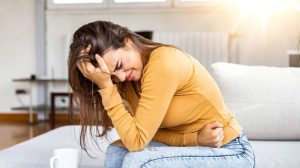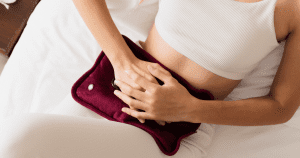Endometriosis Pain:
Endometriosis pain refers to the discomfort or severe pain experienced by individuals with endometriosis, a medical condition where tissue similar to the lining of the uterus grows outside the uterus. This displaced tissue, often found on the ovaries, fallopian tubes, and other pelvic structures, responds to hormonal changes during the menstrual cycle, causing inflammation, scarring, and pain.
What does endometriosis pain feel like?
Pain is the most common symptom of endometriosis, but each woman’s experience of endometriosis pain, and how this affects their quality of life, is slightly different. For example:
- Severity – endometriosis pain can range from mild to extremely painful.
- Frequency – endometriosis pain is chronic, meaning its reoccurrences are ongoing. It’s usually worse during your period but can happen during other times of the month. For some, pain can last all through the month, with changing intensity. Sometimes, sexual intercourse and going to the toilet make it worse.
- Where in the body – it’s most common to experience this pain in the lower part of your tummy, called pelvic pain, where regular period pain occurs. But you might feel pain in other places, such as your lower back, rectum, or legs, depending on where your endometriosis cells grow.
If you’re living with endometriosis, the cycle of chronic pain can be difficult to cope with and can affect your mental health. Keisha Meek, a 31 year old from Leeds, has lived with endometriosis for 20 years. Read about Keisha’s story of endometriosis pain and how she found life-changing support here.



















